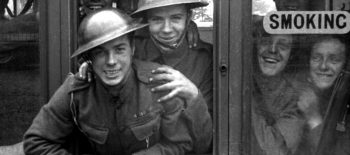The Faculty of Theology and Religious Science at the Catholic University of Leuven (KU Leuven) puts on a documentary exhibition St. Maximilian Kolbe (1894–14 August 1941, Auschwitz) which you can visit between 12 August and 21 October 2016. You can see hundreds of photographs charting Kolbe’s life, beatification, canonisation and the influences Rome, Lourdes and Niepokalanów had on him. It will also be possible to consult publications from the Maurits Sabbe Library, part of the Faculty of Theology, on site. This exhibition is part of a project which aims to investigate and highlight Franciscanism.
PRACTICAL INFORMATION
Screening film Life for life
>>> Faculty of Arts – 8th floor (Blijde Inkomststraat 21, 3000 Leuven) – see map
>>> Tuesday 11 October 2016 – 19:20
>>> Free entrance
Exhibition
>>> Maurits Sabbe Library (Charles Deberiotstraat 26, 3000 Leuven) – see map
>>> 12 August – 21 October 2016 – opening hours
>>> Tuesday 11 October – 17:30 – introduction followed by a reception
>>> Free entrance
Maximilian KOLBE
Maximilian Kolbe, baptised as Rajmund, was born on 8 January 1894 in Zduńska Wola. He was a Conventual Franciscan Friar, martyr, missionary, founder of the movement ‘Knights of the Immaculata’ and promotor of the veneration of the Immaculate Virgin Mary.
In 1910, Kolbe entered the Franciscan Conventual Minor Seminary in the city of Lvov (formerly Poland, now Ukraine) and between 1912 and 1915 he studied Philosophy in Rome at the ‘Gregorianum’ papal university. He continued his studies, reading Theology at the St. Bonaventure Papal Department of the ‘Seraficum’ International Franciscan College. In 1917, he founded the ‘Knights of the Immaculata’ movement.. Kolbe was ordained a priest in 1918. In 1927, Polish prince Drucki-Lubecki donated a piece of land to Kolbe next to Sochaczew where he founded a friary. He baptised this place “Niepokalanów” (‘Immaculate’).
Maximilian left for Nagasaki in Japan in 1930 to found a friary based on the model of Niepokalanów. This centre in Nagasaki gave birth to what is now a Franciscan Province of 85 Japanese friars and 15 houses. Maximilian lived there for six years until he returned to Niepokalanów in Poland in 1936.
Work came to an abrupt halt because of World War II. After his arrest and several months’ detention in three German internment camps, Maximilian Kolbe returned to Niepokalanów and breathed new life into the religious community under different conditions by helping those in need and taking care of the disabled and those expelled from their homes in Poznań, among them a large number of Jews.
On 17 February 1941, Kolbe was arrested again and transported to the German concentration camp of Auschwitz. He offered to take the place of fellow prisoner, Francis Gajowniczek, who had been sentenced to death. Kolbe received a lethal injection on 14 August 1941, and one day later, his corpse was burnt in a crematorium. Maximilian was beatified on October 17, 1971 by Pope Paul VI, and canonised on October 10, 1982 by Pope John Paul II as Martyr of Charity and Patron of our difficult century. His name day is marked on 14 August.
After his beatification and canonisation, interest in his life and work grew, first in Poland, and then in the rest of world. One can find many churches and chapels named after him, not only across Poland, but also in Argentina, Australia, Belgium, Brazil, Canada, France, Germany, Japan, Kenya, Mexico, the Netherlands, the United States and Zambia.
At the heart of Saint Maximilian Kolbe’s spirituality is a devotion to the Immaculate Conception, as defined by the Franciscan tradition, within which the main focus is on the sanctity of the Virgin Mary and the wealth of supernatural gifts. In Kolbe, Franciscan thinking is powerfully embodied: he is a perfect example of the idea of radical poverty and living an exemplary life according to the criteria of the Catholic church.
This exhibition was made possible thanks to the cooperation of the Franciscan orders of the provinces of Flanders, the Netherlands and Münster, the Saint-Trond order of friars minor and the Flemish conventuals.



